Agilent's xCELLigence RTCA system is a real-time cell analysis technology that continuously monitors cell health, behaviour and function in a non-invasive, label-free manner. Using microplates equipped with biosensors, it measures cell impedance to provide quantitative data on cell proliferation, morphology and adhesion. Ideal for research in cell biology, pharmacology and toxicology, xCELLigence RTCA offers a robust solution for a variety of applications, including immunotherapy, cardiotoxicity and cell migration. Its ability to provide real-time data makes it an indispensable tool for modern laboratories.
xCELLigence Cell Analysis Instruments - Good Condition 2015
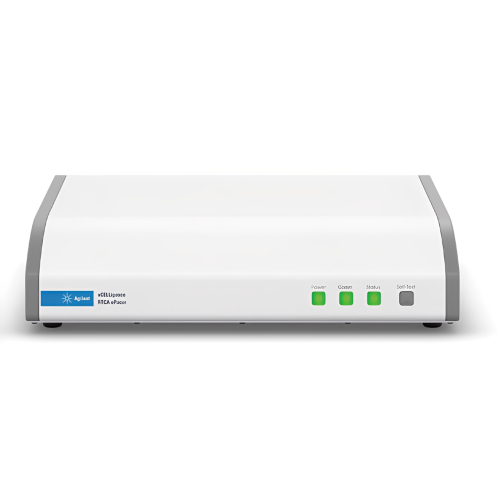
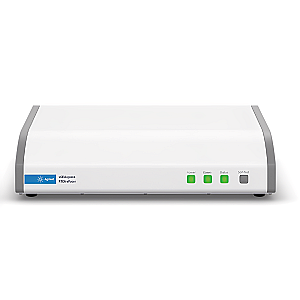

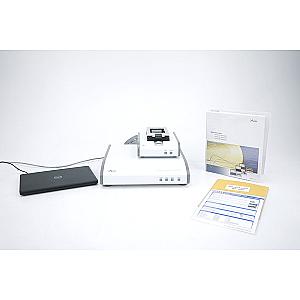
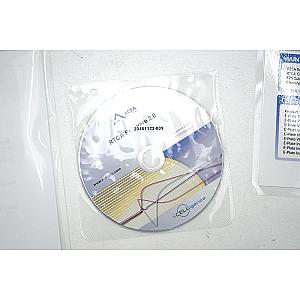
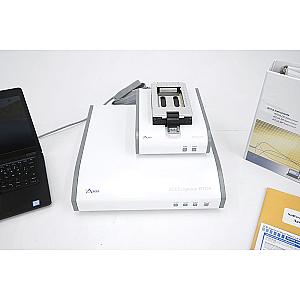
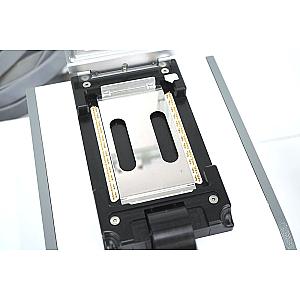






Offer Details
Options :
Single Plate System incl. Laptop and pre-installed Software
Description
Real-Time Cell Analysis with Agilent's xCELLigence
Agilent's xCELLigence Real-Time Cell Analysis (RTCA) system represents a major advance in cell analysis. This innovative technology enables continuous monitoring of cell health, behaviour and function in a non-invasive and label-free manner. Using microplates equipped with biosensors, xCELLigence RTCA measures cell impedance to provide accurate quantitative data on cell proliferation, morphology and adhesion.
The xCELLigence RTCA is designed for a wide range of applications in cell biology, pharmacology and toxicology. It is particularly useful for studies such as immunotherapy, cardiotoxicity, cell migration and receptor signalling. The system's ability to provide real-time data allows researchers to track cellular changes dynamically, providing a deeper understanding of biological processes.
One of the main advantages of xCELLigence RTCA is its ability to perform label-free analysis. This eliminates the need for dyes or fluorescent markers, simplifying experimental protocols and reducing costs. In addition, cell impedance technology enables continuous monitoring of cells, providing accurate and reproducible data.
The xCELLigence RTCA system is also highly versatile. It can be used with different types of microplates, including E-Plate, E-Plate VIEW and CIM-Plate, each designed for specific applications. For example, E-Plate plates are ideal for cell proliferation and adhesion studies, while CIM-Plate plates are designed for cell migration and invasion studies.
In addition, the xCELLigence RTCA is compatible with a variety of analysis software, such as RTCA Software Pro, which enables real-time data acquisition and analysis. This software offers features for graph generation, calculation of parameters such as IC50 and KT50, and compliance with FDA 21 CFR Part 11 regulations.
The xCELLigence RTCA is also designed for easy and intuitive use . Researchers can simply add cells to the microplates and begin monitoring with minimal manual handling. This saves time and reduces experimental errors.
Features
- Real-time monitoring of cell proliferation, morphology and adhesion
- Non-invasive and label-free technology
- Compatible with a variety of microplates (E-Plate, E-Plate VIEW, CIM-Plate)
- RTCA Software Pro for real-time data acquisition and analysis
- Compliance with FDA 21 CFR Part 11 regulations
- Easy and intuitive to use with minimal manual handling
- Versatile for a wide range of applications in cell biology, pharmacology, and toxicology
Technical Details
- xCELLigence RTCA S16:
- Format: 1 x 16 wells.
- Applications: Test development and optimisation.
- Compatibility: E-Plate 16, E-Plate VIEW 16, and E-Plate 16 PET.
- Software: RTCA Software Lite for easy experimental setup.
- Dimensions: 20 cm (width) x 14 cm (depth) x 3 cm (height).
- Weight: 2 kg.
- Operating environment: Relative humidity 5-98%, temperature 20-40°C.
----
- xCELLigence RTCA DP (Dual Purpose):
- Format: 3 x 16 wells.
- Applications: Measurement of cell invasion and migration, monitoring of cell health, behaviour and function.
- Compatibility: E-Plate 16, E-Plate VIEW 16, or CIM-Plate 16.
- Software: RTCA Software Pro for real-time data analysis.
- Additional features: Can run up to three 16-well plates simultaneously or independently.
---
- xCELLigence RTCA SP (Single Plate):
- Format: 1 x 96 wells.
- Applications: Rapid reading of 96-well plates, monitoring of cell health, behaviour and function.
- Reading time: Approximately 7 seconds for a 96-well plate.
- Software: RTCA Software Pro for real-time data analysis.
- Dimensions: 23 cm (width) x 12 cm (depth) x 12 cm (height).
- Operating environment: Relative humidity 5-98%, temperature 20-40°C.
---
- xCELLigence RTCA MP (Multiple Plates):
- Format: 6 x 96 wells.
- Applications: Simultaneous or independent operation of up to six 96-well plates.
- Software: RTCA Software Pro for real-time data analysis.
- Additional features: Integrated data analysis tool for processing large amounts of data in real time.
---
- xCELLigence RTCA HT (High Throughput):
- Format: 1 x 384 wells.
- Applications: Automated high-throughput screening.
- Additional features: Up to four instruments can be integrated and controlled by a single control unit, totalling 1536 wells.
---
- xCELLigence RTCA Cardio:
- Applications: Real-time monitoring of cardiomyocyte contractility and viability for cardiotoxicity assessment.
- Compatibility: Cardiomyocytes derived from stem cells, induced pluripotent stem cells (iPSCs), or primary cardiomyocytes.
---
- xCELLigence RTCA CardioECR:
- Applications: Measurement of extracellular field potential and pacing of cardiomyocytes.
- Additional features: Short- and long-term cell monitoring, enabling assessment of structural cardiotoxicity.
---
- xCELLigence RTCA eSight:
- Format: 3 x 96 wells for impedance, 5 x 96 wells for imaging.
- Applications: Combination of label-free impedance technology with live cell imaging.
- Additional features: 96-well plate readout in 15 seconds and imaging of an entire 96-well plate in 6 minutes.
Compatible Accessories
- E-Plate plates (16 and 96 wells)
- E-Plate VIEW plates (16 and 96 wells)
- CIM-Plate plates (16 wells)
- RTCA Software Pro
- RTCA Control Unit
- RTCA SP or DP station
- RTCA analyser